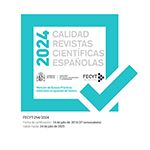«da kniff mich eine Idee». Anmerkungen zur getauschten Haut in Irmgard Keuns Das kunstseidene Mädchen (1932)
Abstract
Fretting and failing because she wants an image that will enable her to escape from a drab office-girl's existence, because she is not what she would like to be, because she is a slave to fashion and other people's perceptions, because she is not her true self. Such is the plight of Doris: the protagonist of Irmgard Keun's novel, The Artificial Silk Girl, has had a bright idea: she will cast herself as a glamour girl, mid-way between her own self-perception and the way she is perceived by others. She decides to turn her life into a movie script. She will write it as if her life were a film, because that is how she sees it, although in fact her life turns out to be anything but that. Just as the script gives a blow by blow account of her failure to escape, a stolen fur coat comes to embody, like a Dingsymbol, the glamorous image of herself as perceived by others, and is, in its turn, a trap which ensnares her on the margins of society in the Weimar Republic.Sufrimiento y fracaso por querer aparentar algo que le permita escapar de las penurias de las pequeñas oficinistas, por no ser lo que le gustaría, por estar supeditada a las modas o percepciones ajenas, por no ser ella misma. Esto es lo que le ocurre a Doris. A la protagonista de la novela de Irmgard Keun, La chica de seda artificial, se le ha antojado una idea: escenificarse como chica glamorosa, en un terreno que se encuentra entre su propia percepción y la ajena. Decide que va afijar su vida en un guión de cine. Quiere escribir como si su vida fuese una película, pero por más que quiera, sólo será un espejismo. De la misma manera que el guión cronometra el fracaso de su huida, un abrigo de piel expropiado encarna _como símbolo objeto_, el fulgor de una percepción ajena, y a su vez, una trampa que la remite a las márgenes de la sociedad de la República de Weimar.
Downloads
Article download
License
In order to support the global exchange of knowledge, the journal Revista de Filología Alemana is allowing unrestricted access to its content as from its publication in this electronic edition, and as such it is an open-access journal. The originals published in this journal are the property of the Complutense University of Madrid and any reproduction thereof in full or in part must cite the source. All content is distributed under a Creative Commons Attribution 4.0 use and distribution licence (CC BY 4.0). This circumstance must be expressly stated in these terms where necessary. You can view the summary and the complete legal text of the licence.










